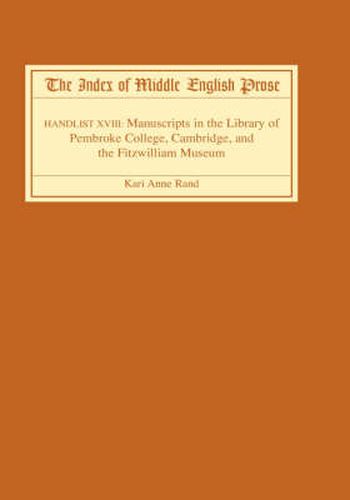Readings Newsletter
Become a Readings Member to make your shopping experience even easier.
Sign in or sign up for free!
You’re not far away from qualifying for FREE standard shipping within Australia
You’ve qualified for FREE standard shipping within Australia
The cart is loading…






Two very different collections are surveyed in this volume. The manuscripts of Pembroke College, Cambridge are typical of a medieval foundation. Its core of books is a working library of that period, representing the interests andneeds of its Fellows, very often given or bequeathed by them to the College. The collection was substantially enlarged in 1599 through the gift by William Smart of Ipswich of a large number of manuscripts which until the Reformation had belonged to the Abbey of Bury St Edmunds. By contrast the emphasis of the Fitzwilliam Museum collection is to a great extent art historical. At its heart are the manuscripts bequeathed by Lord Fitzwilliam in 1816. These were supplemented throughout the 19th century by a series of gifts and bequests, culminating in 1904 in the largest bequest to date, from Frank McClean, of some 203 manuscripts.
In spite of the different character of the two collections, both contain a range of Middle English prose items, among them Chaucer’s Boece, a complete Wycliffite sermon cycle and several Paston letters [all from Pembroke], the Anlaby Cartulary, the Canutus pestilence tract, the Brut, Lydgate’s Serpent of Division and Nicholas Love’s Mirror of the Blessed Life of Jesus Christ (from the Fitzwilliam).
KARI ANNE RAND is Professor of Older English Literature at the University of Oslo.
$9.00 standard shipping within Australia
FREE standard shipping within Australia for orders over $100.00
Express & International shipping calculated at checkout
Two very different collections are surveyed in this volume. The manuscripts of Pembroke College, Cambridge are typical of a medieval foundation. Its core of books is a working library of that period, representing the interests andneeds of its Fellows, very often given or bequeathed by them to the College. The collection was substantially enlarged in 1599 through the gift by William Smart of Ipswich of a large number of manuscripts which until the Reformation had belonged to the Abbey of Bury St Edmunds. By contrast the emphasis of the Fitzwilliam Museum collection is to a great extent art historical. At its heart are the manuscripts bequeathed by Lord Fitzwilliam in 1816. These were supplemented throughout the 19th century by a series of gifts and bequests, culminating in 1904 in the largest bequest to date, from Frank McClean, of some 203 manuscripts.
In spite of the different character of the two collections, both contain a range of Middle English prose items, among them Chaucer’s Boece, a complete Wycliffite sermon cycle and several Paston letters [all from Pembroke], the Anlaby Cartulary, the Canutus pestilence tract, the Brut, Lydgate’s Serpent of Division and Nicholas Love’s Mirror of the Blessed Life of Jesus Christ (from the Fitzwilliam).
KARI ANNE RAND is Professor of Older English Literature at the University of Oslo.